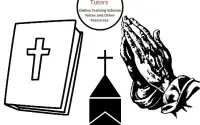An Eagle Comprehension English Grammar JSS 1 Second Term Lesson Notes Week 4

Lesson Plan: Composition – An Eagle
Subject: English Grammar
Class: Junior Secondary School 1 (JSS 1)
Term: Second Term
Week: 4
Age: 10–12 years
Topic: Composition – An Eagle
Sub-topic: Writing a Descriptive Essay about an Eagle
Duration: 40 minutes
Behavioural Objectives
By the end of the lesson, students should be able to:
- Describe the physical characteristics and behavior of an eagle.
- Write a short composition about an eagle.
- Explain the significance of eagles in nature and culture.
Keywords
- Eagle
- Predator
- Beak
- Talons
- Soaring
Set Induction
The teacher shows students a picture of an eagle and asks:
- “Have you ever seen an eagle? Where?”
- “What makes an eagle different from other birds?”
Entry Behaviour
Students have observed birds in their environment and understand basic bird characteristics.
Learning Resources and Materials
- Pictures of eagles.
- Short videos showing eagles in flight or hunting.
- Flashcards with key terms related to eagles.
Building Background/Connection to Prior Knowledge
The teacher explains that eagles are large birds of prey known for their strength and sharp vision. They are often seen as symbols of power and freedom.
Embedded Core Skills
- Critical Thinking: Analyze the role of eagles in the ecosystem.
- Communication: Describe the eagle in a clear and organized manner.
- Creativity: Write a unique composition about the eagle.
Reference Books
- Lagos State Scheme of Work for JSS 1 English Grammar.
- Junior English Project (Relevant edition).
Instructional Materials
- Pictures and videos of eagles.
- Flashcards with key terms and definitions.
Content
Composition: An Eagle
- Description of an Eagle
- The eagle is a large and powerful bird of prey.
- It has a strong, hooked beak for tearing flesh.
- Its talons are sharp and strong, used to catch prey.
- Eagles have excellent eyesight, allowing them to spot prey from far distances.
- They are known for soaring high in the sky and building nests in tall trees or cliffs.
- Behavior of an Eagle
- Eagles are solitary hunters and feed on small animals like fish, rabbits, and snakes.
- They are very protective of their young and build large nests called eyries.
- Eagles are known for their graceful flight and ability to glide effortlessly for long periods.
- Significance of Eagles
- Eagles are symbols of strength, courage, and freedom.
- They are used in the emblems of many nations, including Nigeria.
- Cultural Importance of Eagles
- In some cultures, eagles are seen as messengers of the gods.
- They appear in folklore and stories as symbols of vision and leadership.
Examples
- An eagle can spot its prey from a distance of up to 2 kilometers.
- The bald eagle is the national bird of the United States.
- Eagles often live near rivers and lakes where they can catch fish.
- A golden eagle’s wingspan can reach up to 2.3 meters.
- Eagles use their talons to capture prey quickly and effectively.
Presentation
Step 1: Revision of the Previous Topic
The teacher reviews the topic “Marriage” by asking students to define marriage and name key terms related to it.
Step 2: Introduction of the New Topic
The teacher writes “An Eagle” on the board and shows pictures of eagles, explaining their physical characteristics and behavior.
Step 3: Student Contributions
Students share their observations and knowledge about eagles and relate them to the teacher’s explanations.
Teacher’s Activities
- Display pictures and videos of eagles and discuss their features.
- Explain key terms like “talons,” “predator,” and “soaring.”
- Guide students in brainstorming ideas for their composition.
Learners’ Activities
- Observe the pictures and videos of eagles and note key features.
- Participate in discussions about the eagle’s characteristics and behavior.
- Write a short composition about an eagle using the teacher’s guidance.
Evaluation Questions
15 Fill-in-the-Blank Questions:
- An eagle is a large ______ bird of prey. (a) nocturnal (b) powerful (c) small (d) quiet
- Eagles use their ______ to catch and hold prey. (a) beak (b) talons (c) wings (d) feathers
- The eagle’s ______ eyesight helps it spot prey from far away. (a) poor (b) sharp (c) limited (d) blurry
- Eagles build large nests called ______. (a) nests (b) perches (c) eyries (d) dens
- The wingspan of a golden eagle can reach up to ______ meters. (a) 1.2 (b) 2.3 (c) 3.5 (d) 4.0
(Continue with similar questions up to 15.)
Class Activity Discussion
15 FAQs with Answers:
- Q: What is an eagle?
A: An eagle is a large bird of prey known for its strength and excellent eyesight. - Q: What do eagles eat?
A: Eagles eat small animals like fish, rabbits, and snakes. - Q: What are an eagle’s talons used for?
A: Talons are used to catch and hold prey. - Q: Why are eagles considered symbols of strength?
A: Because of their powerful build, sharp vision, and ability to soar high. - Q: What is the purpose of an eagle’s beak?
A: It is used for tearing flesh.
(Continue with similar FAQs up to 15.)
Assessment
10 Short-Answer Questions
- Describe the physical characteristics of an eagle.
- What is the function of an eagle’s talons?
- What is the eagle’s nest called?
- Name two small animals that eagles eat.
- Why is the eagle considered a symbol of freedom?
(Continue with similar questions up to 10.)
Conclusion
The teacher collects students’ compositions, marks them, and provides feedback on their descriptive writing.
SEO Elements
Captivating Title: Writing About an Eagle: JSS 1 Composition Lesson Plan
Focus Keyphrase: Composition about an Eagle
SEO Title: Composition About an Eagle – JSS 1 Lesson Plan
Slug: composition-eagle-jss1-lesson
Meta Description: A comprehensive JSS 1 English lesson plan on writing a composition about an eagle. Includes examples, activities, and evaluation questions.
Related
Related posts:
- Revision Comprehension English Grammar JSS 1 Second Term Lesson Notes Week 11
- Examination Comprehension English Grammar JSS 1 Second Term Lesson Notes Week 12
- Marriage Comprehension English Grammar JSS 1 Second Term Lesson Notes Week 3
- The Library Comprehension English Grammar JSS 1 Second Term Lesson Notes Week 2
- The Dog Comprehension English Grammar JSS 1 Second Term Lesson Notes Week 1
Related Posts
Basic Science JSS 1 Second Term Lesson Notes

Abraham’s Obedience: A Test of Faith Christian Religious Studies JSS 1 First Term Lesson Notes Week 6

Social Studies JSS 1 Second Term Lesson Note – Revision of First Term’s Work
About The Author
Edu Delight Tutors
Am a dedicated educator with a passion for learning and a keen interest in technology. I believe that technology can revolutionize education and am committed to creating an online hub of knowledge, inspiration, and growth for both educators and students. Welcome to Edu Delight Tutors, where learning knows no boundaries.